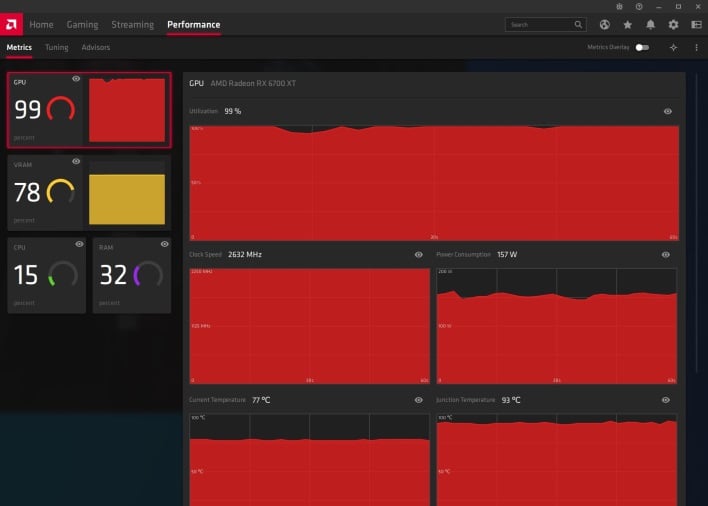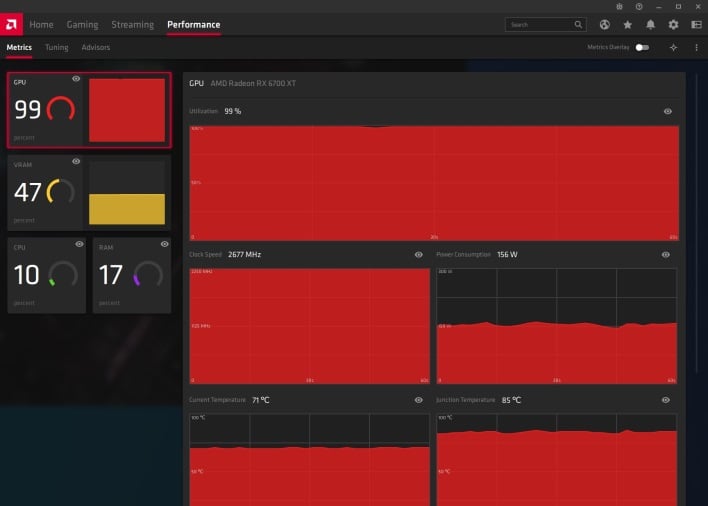AMD Radeon RX 6700 XT Review: Impressive 1440p PC Gaming
AMD Radeon RX 6700 XT: Overclocking, Power, Noise And The Verdict
With the tuning options built into AMD's driver suite, users have multiple ways to tweak a Radeon RX 6700 XT's performance. Users can manually alter frequencies, memory timings, memory frequencies, voltages, fan speeds, and the max power target using percentages or numerical sliders. Various preset modes are available as well so users can auto-tune a number of characteristics, including GPU and memory frequencies as well as GPU voltage, including under-volting -- AMD really gives users a ton of options to tweak if they so choose.
With previous-generation Radeons, though the GPUs had multiple sensors built-in, a single sensor had been used to determine the GPU temperature and data from that lone sensor was used to control the card's thermal profile. With newer GPUs, like the Navi 22-based Radeon RX 6700 XT, AMD has incorporated a network of multiple thermal sensors at strategic locations across the die. Data gathered from the sensors is used to determine what AMD is calling the "Junction Temperature", and it's the Junction Temperature that is used to tune the card's power and thermal profiles (the Junction Temperature is effectively the hottest part of the GPU at any given time). AMD claims the increased resolution and accuracy from the additional thermal sensors allows it to increase overall sustained performance, because throttling based on the Junction Temperature is more reliable and effective.
The tuning options built into AMD's Radeon Software suite offer manual controls, along with automatic under-volting and automatic GPU and Memory overclocking. Finding the lowest stable voltage and highest stable memory and GPU clocks, while simultaneously increasing the max power target and keeping temperatures low, will yield the best overall overclocking results.
At its stock settings, we saw the GPU clock typically hovering in the 2,500 - 2,620MHz range while gaming (give or take), with our particular Radeon RX 6700 XT sample. With a little tweaking we found that we could easily max-out the memory clock on our card to 2,150MHz (17.2Gbps) with Fast memory timings enabled, and with a mild under-volt to 1,175mV, a max frequency set to 2,729MHz, and +15% to the power target, we typically saw a wider-range of real-world game clocks, commonly in the 2,550MHz - 2,690MHz range. The junction temperature while overclocked peaked in the mid 80°C range with these settings, with a slight bump to the fan curve into the 2,200-ish RPM range.
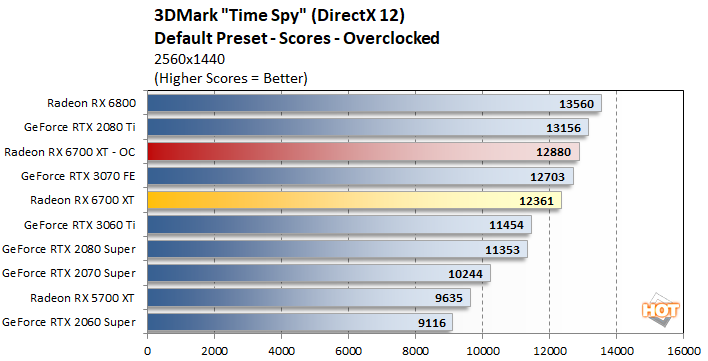

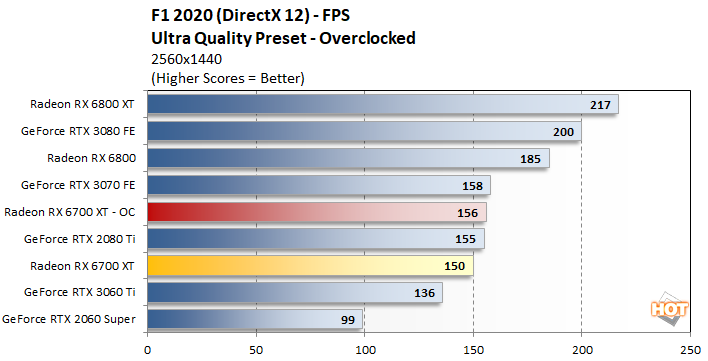
While we had the card overclocked, we saw some decent increases in performance. We were able to overtake the GeForce RTX 3070 in the Time Spy benchmark, and performance in Metro Exodus and F1 2020 increased by a few percentage points as well. With a little more tweaking and a more aggressive fan curve, we wouldn't be surprised to see the Radeon RX 6700 XT catch the RTX 3070 in these game titles as well.
|
|
|

|

In our real-world setup (we tested the GPUs inside a mid-tower chassis, with intake and exhaust fans, a standard PSU and an air-cooled CPU), the Radeon RX 6700 XT technically landed about in the middle of the pack in terms of it sound pressure level, but we would definitely consider it a quiet GPU. Under idle or low-load conditions, the Radeon RX 6700 XT's fans can spin down completely. Under load, they do spin up to audible levels, but the card's acoustics remain tame with its default fan curve.
AMD Radeon RX 6700 XT Summary And Verdict
We know full well that discussing suggested pricing at this point in time means next to nothing for consumers, but until the current supply chain issues subside, MSRPs are still the relative metric we have to use to surmise where a particular company believes its product fits into the current competitive landscape. AMD has set the MSRP for its Radeon RX 6700 XT at $479, though some customized partner boards will undoubtedly be priced higher. That puts the Radeon RX 6700 XT's price higher than the competing GeForce RTX 3060 Ti ($399 MSRP), but somewhat lower than the GeForce RTX 3070 ($499 MSRP). Looking back through the numbers, that's right where the Radeon RX 6700 XT falls in terms of performance with traditional rasterization. Factor ray tracing into the mix, however, and the Radeon falls behind both of NVIDIA's competitive products.
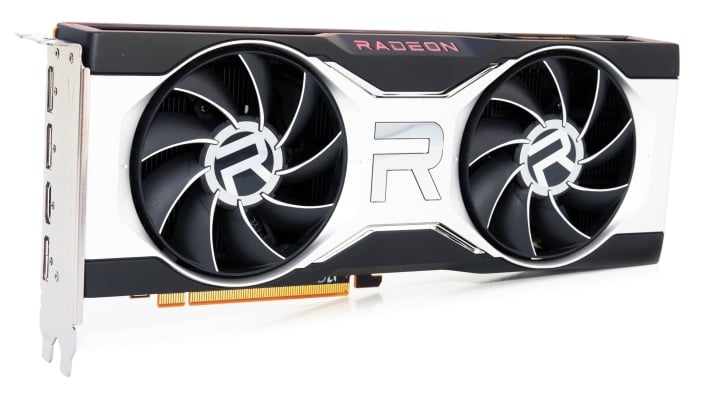
The Radeon RX 6700 XT has more on-board memory than either the GeForce RTX 3060 Ti or 3070 though, which will help as games get more complex moving forward. Ultimately, AMD has positioned the Radeon RX 6700 XT as a great 1440p gaming GPU and that's exactly what it is. The Radeon RX 6700 XT is capable of pumping out smooth framerates at 1440p with the highest image quality settings in most games and put up playable framerates in a couple of titles at 4K as well, namely F1 2020 and FarCry New Dawn. Anyone looking for a modern, full-featured gaming graphics card that's upgrading from a previous-gen card, should consider the Radeon RX 6700 XT, once pricing and availability settle down and you don't have to sacrifice a kidney to get one.

|
|

